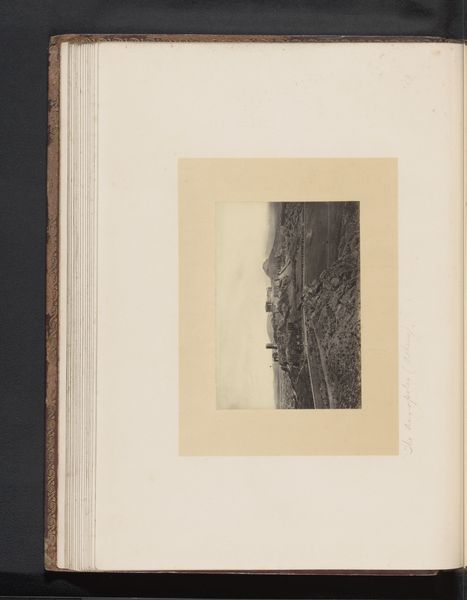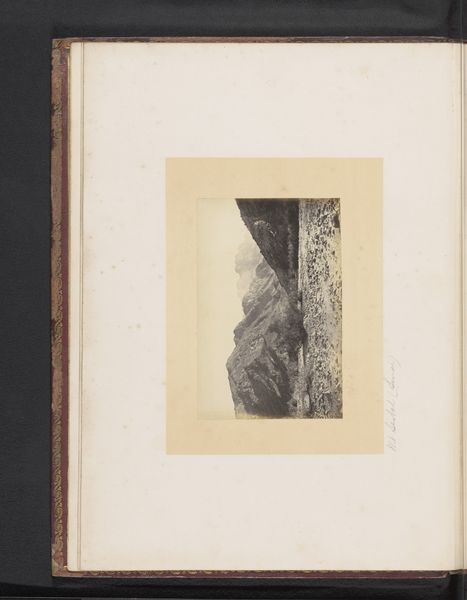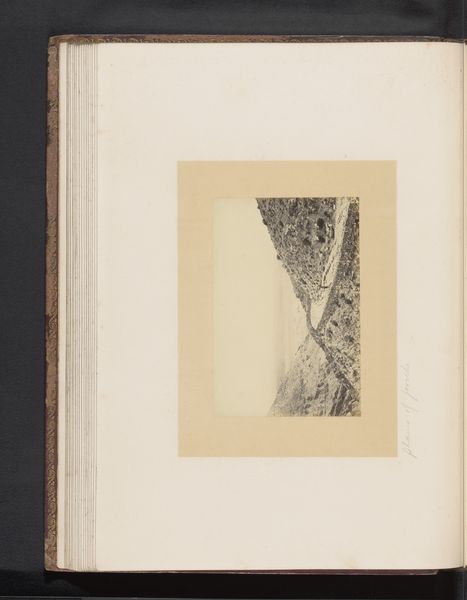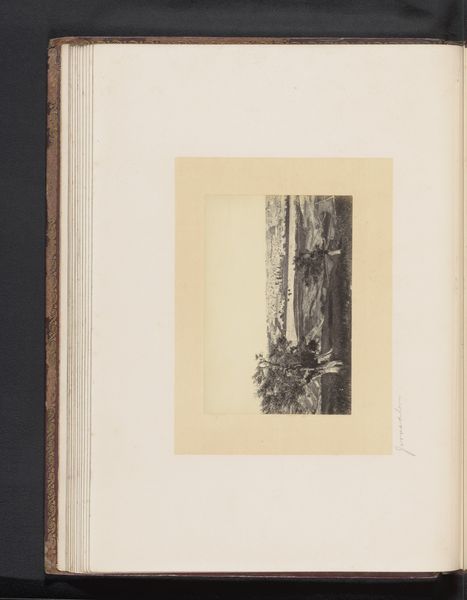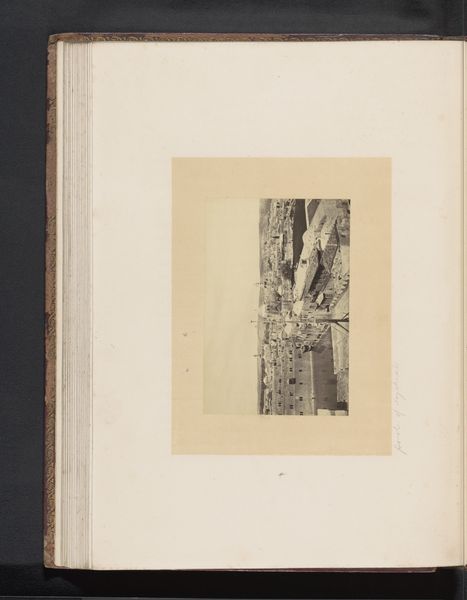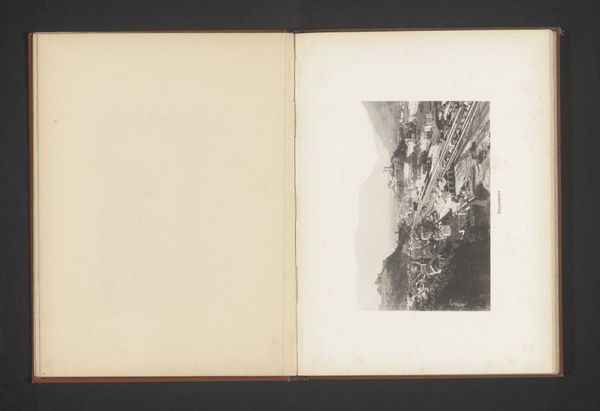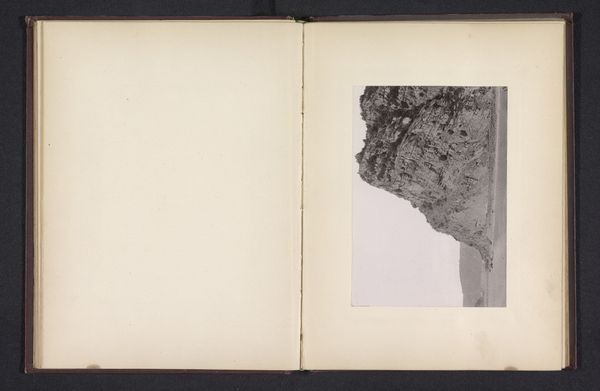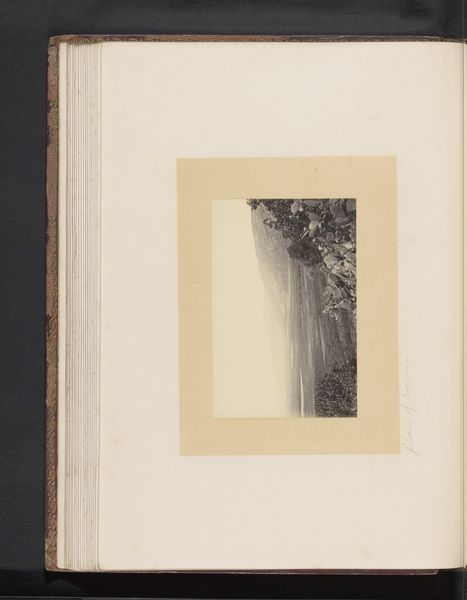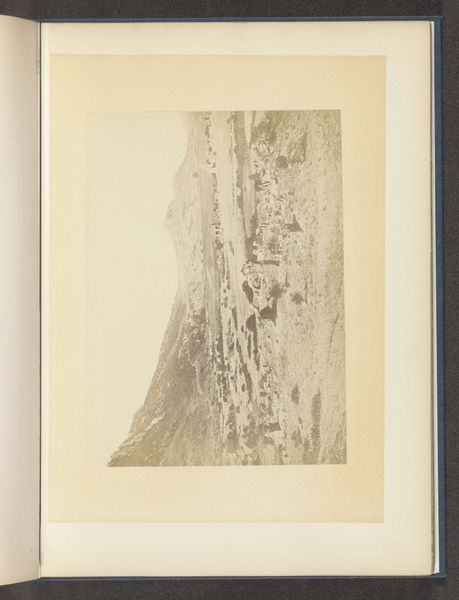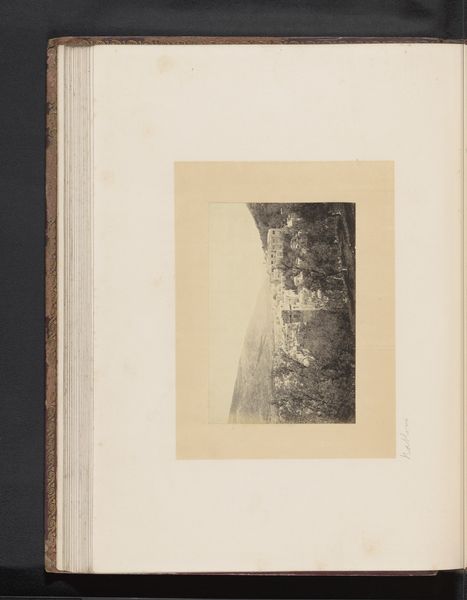
Dimensions: height 104 mm, width 154 mm
Copyright: Rijks Museum: Open Domain
Curator: Here we have Francis Frith's "Gezicht op het Sinaïgebergte," an albumen print dating to before 1875. Editor: The very first thing that strikes me is its sense of austere solemnity. It feels almost biblical, like a page torn from some ancient sacred text. Curator: It’s presented within what looks like an album, which is significant. The albumen process itself involves coating paper with egg whites, creating a smooth surface for the photographic emulsion. This makes each print a crafted object. Think of the labour involved in sourcing those eggs, preparing the paper, and then painstakingly developing the image. Editor: Absolutely, and that textural quality adds to the symbolic weight. The mountain itself, of course, is pregnant with symbolism, especially Mount Sinai. A site of revelation, law, and divine encounter. The negative space on the left almost functions as a visual echo of the tablets of law given to Moses. Curator: Consider also the social context in which Frith was operating. He mass-produced these images, making the ‘exotic’ and ‘biblical’ landscapes accessible to Victorian consumers. It becomes less about individual artistic expression and more about the industrialization of image-making and consumption. Editor: While I appreciate that, I think the image taps into a much older cultural narrative. Think of the tradition of depicting mountains as places of spiritual ascent and transformation. The framing within the book encourages us to engage intimately with a symbolic geography. This speaks volumes about humankind’s desire for something larger than ourselves, literally placed within arm's reach thanks to photography. Curator: Precisely! It’s through the mass production and circulation of these images that this kind of cultural mythologizing became so widespread. Frith’s technique helped shape public understanding. It also perpetuated certain power dynamics in tourism and consumption during British colonial expansion in that area. Editor: An incredibly rich and complex history all captured here, both materially and symbolically, within the delicate layers of a 19th-century photograph. Curator: Yes, examining both aspects allows us to fully appreciate the scope of this work.
Comments
No comments
Be the first to comment and join the conversation on the ultimate creative platform.
